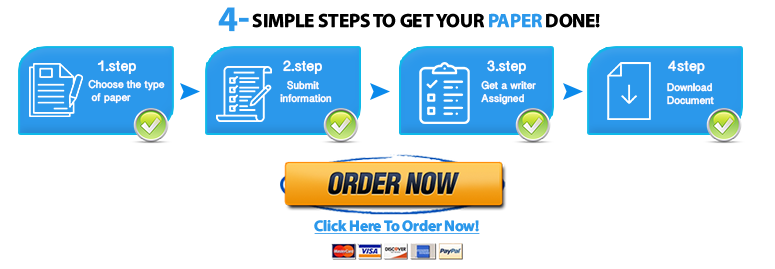History assignment
In this course we ask that you complete two assignments using library resources. In doing so, you will be introduced to some research methods and familiarized with some materials available at the Lied Library. The library can be an important resource for any of your courses, so this introduction will make a valuable contribution to your education. For this reason, this assignment is a core element of the course and should be approached with seriousness and diligence. The instructor and teaching assistants, as well as members of the library staff, are prepared to help.
The specific goal of this first exercise – upon which the second exercise will build – is to use a library database for the purposes of locating, downloading, and commenting upon a primary source. The exercise will allow you to develop and refine searching skills, which are increasingly necessary, because of the amount of information available.
A primary source is a piece of information – usually a document – that was produced at a point in the past that interests us. Although such sources may be biased, incomplete, or otherwise problematic, they nonetheless represent the most direct access that we have to opinions in the past. They are where the production of historical knowledge begins. For this exercise we will focus on newspapers, which are an excellent primary source that our library has in the form of searchable databases. The purpose of this exercise is to introduce you some of many library databases. If you use a search engine such as Google instead, you will not only miss the point of the exercise, you will also make things more difficult for yourself and probably earn a lower grade.
Save your time - order a paper!
Get your paper written from scratch within the tight deadline. Our service is a reliable solution to all your troubles. Place an order on any task and we will take care of it. You won’t have to worry about the quality and deadlines
Order Paper NowHow to Get to Databases:
Go to the library web site and look for the “All Library Databases” link in the right hand column. Click on it. At the top of the page that comes up you will see a menu bar with drop-down options. Choose “History” from the “All Subjects” menu and “Newspapers” from the “All Database Types” menu. The newspapers are listed in alphabetical order. Select articles from two of these newspapers:
Chicago Tribune (1849-1992)
Los Angeles Times (1881-1994)
New York Times (1851-2014)
Washington Post (1877-1999)
What to Look For
I want you to seek out articles on the Sixteenth Amendment to the Constitution, which allowed for a federal income tax. This amendment was proposed by Congress on July 12, 1909 and ratified on February 3, 1913.
In order to search you must determine a relevant period from before it was proposed to after it was ratified, that is, when it would have been discussed. You may not choose an article that appeared after December 1913. Next you must begin to find articles on the amendment using search terms and dates. We recommend clicking on the Advanced Search link, which allows for more specificity, including date ranges. It may be tempting to write “Sixteenth Amendment” and hope for the best. This is probably not a good idea, as the amendment was probably referred to by its number only after it was approved, while most of the discussion likely preceded it. You would be better off looking closely at the amendment, picking out the key issue that it addresses, and then using that as the basis for your search, perhaps also adding the word “amendment.” Note that in most cases you may also refine your search by particular dates, which can be very useful for limiting the number of results. The key thing is that you have to have some patience and must try several different combinations of terms and dates in order to find the best articles. The determination of the right search terms and dates is the most challenging part of the exercise, therefore, we ask that you keep track of the combinations of terms and dates that you use in undertaking it, and the number of articles that you view or download. You should spend at least an hour on the search, and should probably try at least five different combinations of terms and dates. Ideally, you should view at least five articles before determining the one that is best for your purposes. Articles come in various sizes, but for this exercise an article should consist of at least four substantial paragraphs. My own searching of articles suggests that only articles of this size will give you enough of a foundation on which to comment.
In terms of the content of the article, the key thing is that the text actually deals substantively with the core issue at stake (federal income tax) or with the process of the amendment’s approval (articles & editorials for or against, the various stages of the process, etc.).
It is worth emphasizing again that performing a search like this takes patience. Do not expect that an ideal article will emerge immediately. Do not take the first article that seems even remotely relevant. Rather, take some time to immerse yourself in the process.
What To Submit
The written part of the exercise consists of two parts: First, in a solid paragraph or two you should summarize the process by which you found the article. Indicate the specific combination of terms that you used in your search and how many articles you consulted before choosing one. Indicate at least briefly why you chose the article that you did – that is, why you thought it was the best from among the ones you viewed. This paragraph should be about ¾ of a page in length (200-250 words).
In the following paragraph(s) you should provide at least a provisional analysis of the article. This involves providing a brief summary of the content. Then try to draw some conclusions. Is it an editorial that expresses an opinion about the amendment, or does the article claim merely to report in a neutral fashion? If the latter is true, are there any subtle clues as to how the author of the article or the newspaper as a whole relates to the question? How does the article relate to other portions of the Constitution or to what you heard in the lectures? What conclusions can you draw about how people related to the issues at the time? For example, was the federal income tax regarded as something very radical? How did people understand the rationale for increasing federal revenues? In other words, try to draw out from your article as much information about the times and about the constitutional process as you can.
What you submit, then, should take the form of approximately 2 pages of text in double spaced 12-point font. Anything less than one page (300 words) or more than 3 pages (900 words) is not acceptable. In addition, you should also print out and attach the article that you are discussing, including a clear indication of where it came from (for example, New York Times, March 26, 1911). You should also attach the rubric sheet.
Final Advice
As you prepare to submit your work, keep in mind the impression that you create about yourself by turning in one essay as opposed to another. If, for example, you turn in a bad essay showing obvious signs of haste, then the instructors will draw the obvious conclusions. A better essay, or at least one that shows obvious signs of hard work and effort, will of course create a different impression. Good luck!
FIRST LIBRARY ASSIGNMENT RUBRIC
Paragraph one
Discussion of search terms and dates with results —— 1-10
Discussion of multiple articles found —— 1-10
Clear explanation of why you chose the article you did —— 1-20
Summarize the search process
Why did you choose this article
Paragraph two
Good factual accounting of article’s details —— 1-15
Indicated what type of article it was —— 1-10
Discussion of position (if any) article took —— 1-15
Brief summary of content
Type of article
Overall impression of the paper —— 1-20
SUB-TOTAL POINTS —— 100
Points deducted
Article is not attached —— -20
Article is not at least 4 paragraphs —— -10
The paper was late (penalty per weekday) —— – 5
TOTAL POINTS —— 100
Attach this sheet to your paper
"Looking for a Similar Assignment? Order now and Get 10% Discount! Use Code "Newclient"




